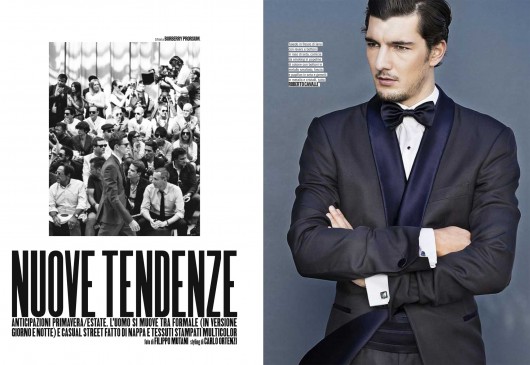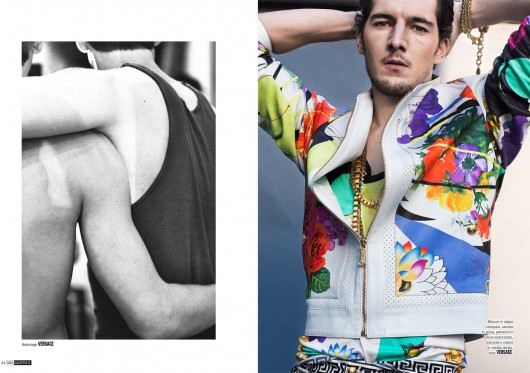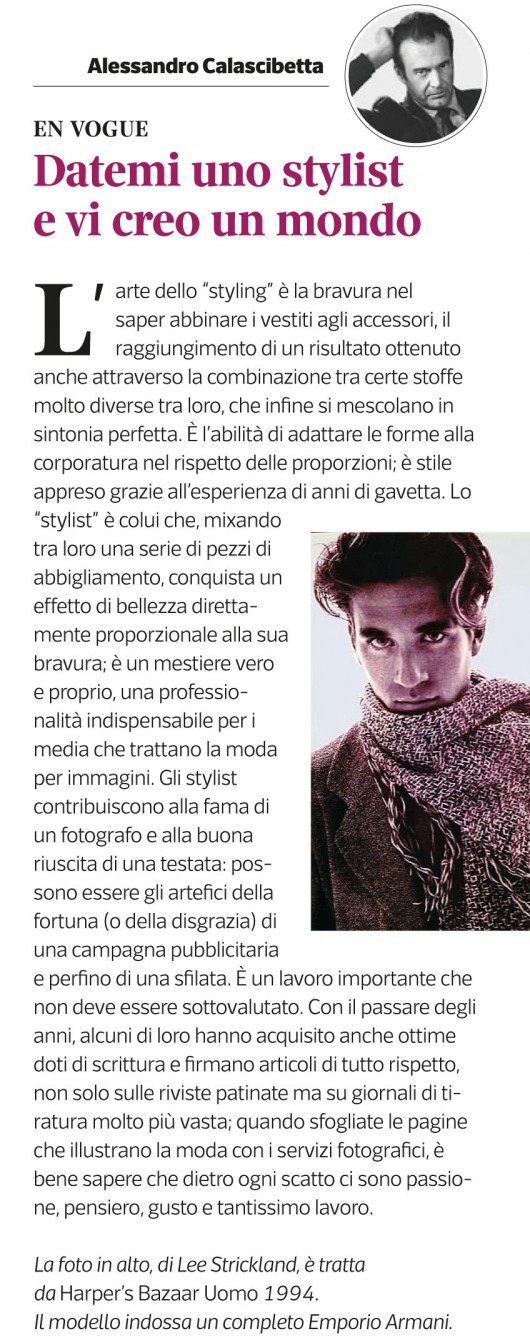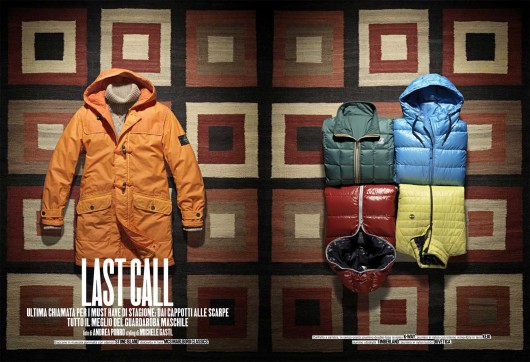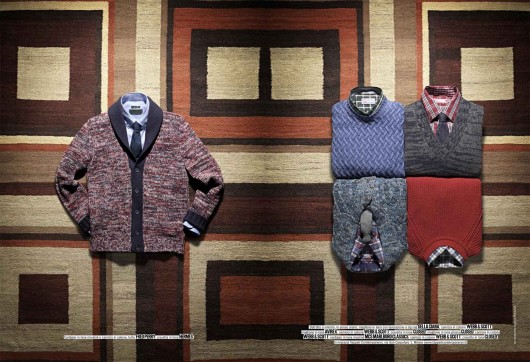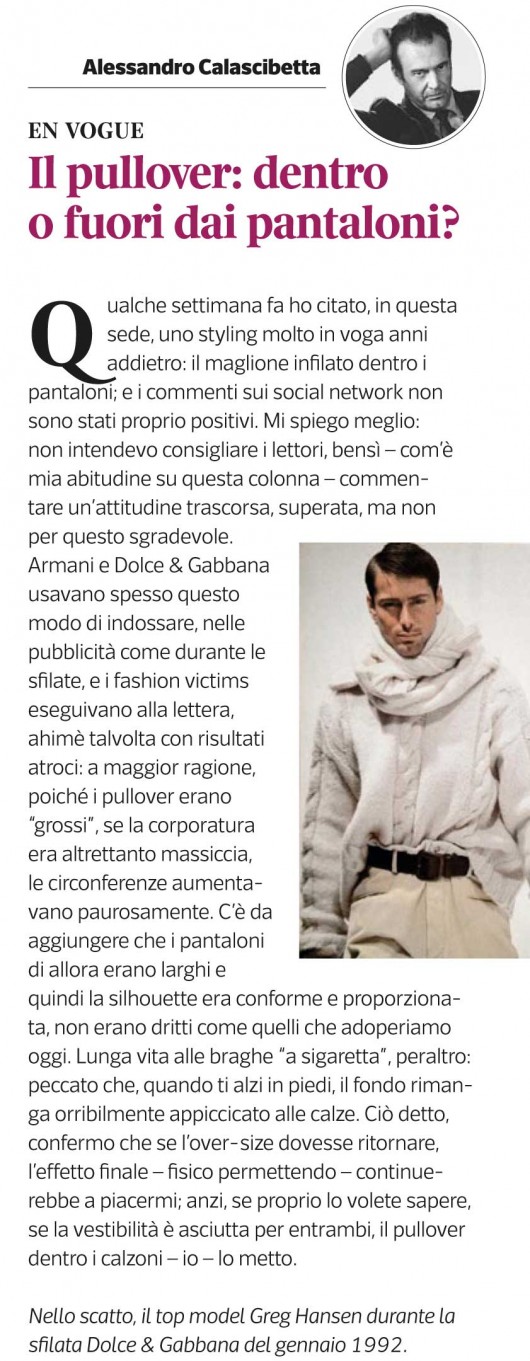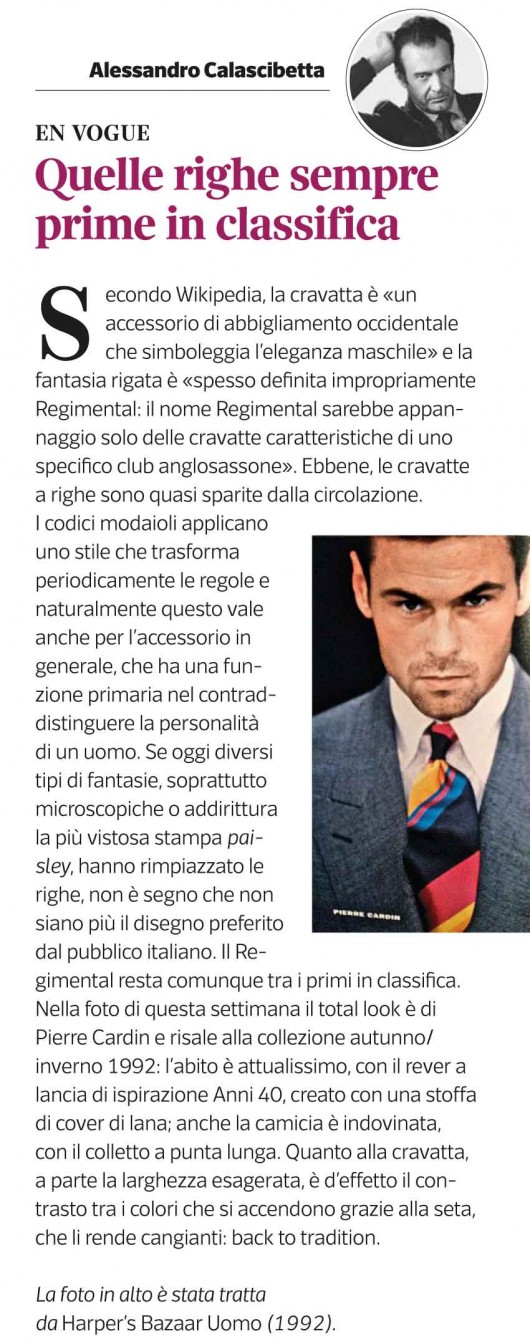
According to Wikipedia, a tie is “an occidental clothing accessory which embodies men’s elegance” and the stripe patterned ones are often erroneously denominated Regimental (when Regimental ties, in the normal sense, are only associated with membership in a particular english club or regiment). Well, striped ties have almost disappeared. Fashion codes keep adopting styles which are changing the rules periodically.The same also applies to accessories in general since one of their main purposes is to help a man’s personality to stand out. If today stripes have been replaced by different patterns as the microscopic or the garish Paisley ones, it doesn’t mean they are not the italian public’s favourite design anymore. Regimental it’s still on top of the fashion charts. In this week’s photo we have a total look Pierre Cardin from the Autumn/Winter 1992 collection. The style of the suit is very modern, realized in woolen fabric with a 40s inspired peak lapel. Perfect choice for the wing collar shirt as well. In regard to the tie, a part from the width of it which is exaggerated, the contrast between the colors works perfectly, they are very bright as they change as light reflects off the silk : back to tradition. A Pierre Cardin design, Harper’s Bazaar Uomo, 1992.






